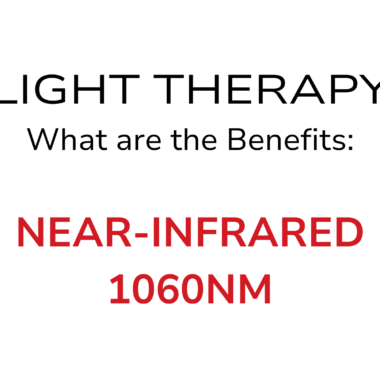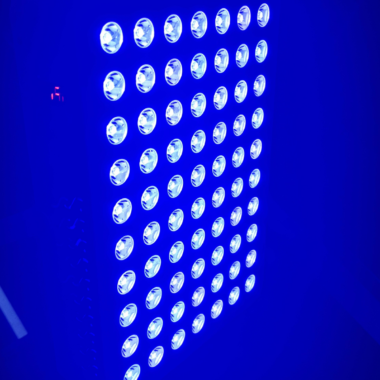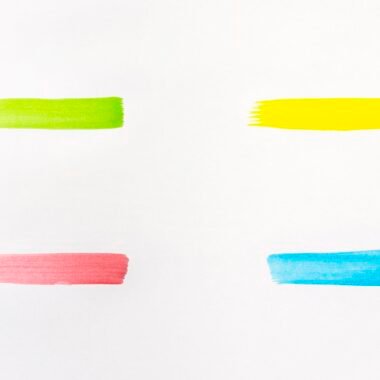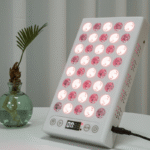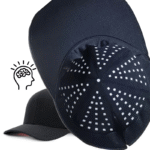LED Light Therapy, also known as photobiomodulation, is a non-invasive treatment that uses specific wavelengths of light to promote healing, reduce pain, and improve skin health.
In recent years, LED Light Therapy has gained immense popularity due to its scientifically proven benefits and versatility. This article will delve into the science behind LED Light Therapy, how it works at the cellular level, and the wide range of applications it offers.
Table of Contents
ToggleHow Does LED Light Therapy Work?
At the core of LED Light Therapy is the concept of photobiomodulation. This involves the interaction of light with cells, where photons of specific wavelengths are absorbed by cellular components called chromophores. This absorption triggers a cascade of biochemical reactions that ultimately lead to therapeutic effects.
The primary chromophore involved in LED Light Therapy is cytochrome c oxidase, a key enzyme in the mitochondria (the cell’s powerhouses). When this enzyme absorbs light energy, it enhances mitochondrial function, leading to increased production of adenosine triphosphate (ATP), the energy currency of cells.
Increased ATP production has several beneficial effects:
- Cellular Repair and Regeneration: ATP provides the energy needed for cells to repair damaged tissues and regenerate new ones.
- Reduced Inflammation: ATP helps modulate inflammatory responses, reducing pain and swelling.
- Improved Blood Flow: ATP enhances blood circulation, delivering oxygen and nutrients to tissues while removing waste products.
- Increased Collagen Production: ATP stimulates collagen synthesis, which is essential for skin health and wound healing.
Different Wavelengths, Different Effects
LED Light Therapy utilises a range of wavelengths, each with unique therapeutic properties:
- Red Light Therapy (630-660nm): Red light is primarily used for skin rejuvenation, promoting collagen production, reducing wrinkles, and improving skin texture. It also penetrates deeper into tissues, aiding in muscle recovery and pain relief.
- Blue Light Therapy (415-450nm): Blue light is effective in treating acne by killing bacteria responsible for breakouts. It also helps regulate oil production and reduce inflammation.
- Near-Infrared Light (800-950nm): Near-Infrared Light has deeper penetration capabilities and is used for pain relief, wound healing, and reducing inflammation in deeper tissues.
Proven Benefits of LED Light Therapy
LED Light Therapy has been extensively studied and has shown promising results in various applications:
- Skin Rejuvenation: Clinical studies have demonstrated significant improvements in skin texture, wrinkles, and overall appearance with consistent LED Light Therapy treatments.
- Pain Management: Research suggests that LED Light Therapy can effectively reduce pain from various conditions, including arthritis, muscle soreness, and nerve pain.
- Wound Healing: LED Light Therapy has been shown to accelerate wound healing, reduce scarring, and promote tissue regeneration.
- Inflammation Reduction: The anti-inflammatory properties of LED Light Therapy make it a valuable tool for managing inflammatory conditions such as acne, rosacea, and eczema.
- Mood Enhancement: Some studies suggest that LED Light Therapy may have positive effects on mood and sleep, potentially benefiting individuals with seasonal affective disorder (SAD) or sleep disturbances.
Safety and Considerations
LED Light Therapy is generally considered safe for most individuals. However, it is essential to use devices from reputable manufacturers and follow recommended treatment protocols. Individuals with certain medical conditions, such as epilepsy or light sensitivity, should consult with their healthcare provider before undergoing LED Light Therapy.
The Future of LED Light Therapy
LED Light Therapy continues to evolve with ongoing research and technological advancements. Emerging trends include wearable LED devices, targeted treatments for specific conditions, and personalised protocols based on individual needs. As research progresses, we can expect even more innovative applications and benefits from LED Light Therapy in the future.
Conclusion
LED Light Therapy is a versatile and effective treatment modality with a wide range of applications. Its ability to promote healing, reduce pain, and enhance skin health makes it a valuable tool in both medical and aesthetic settings. With ongoing research and innovation, LED Light Therapy holds immense potential for improving the lives of individuals seeking natural and non-invasive solutions for their health and wellness needs.

